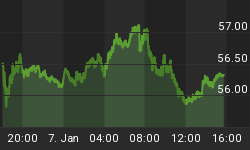The $349 billion in loans the Federal government promised struggling small businesses ran out of money as of Thursday, and what money was lent out was hijacked by big businesses to whom it did not belong, with help from America’s even bigger lending institutions.
The plan is called the Paycheck Protection Program (PPP), and it’s promises meant a lifeline for small business that will either go under because of COVID-19, or even in the best-case scenario, not be able to pay their workers.
For any small business attempting to get a loan, chances are they hit a wall rightout of the starting gate, when they learned that they could only pursue a loan with a “participating” bank, and that they had to have a relationship with that bank.
The next brick wall would come in the form of the nature of that relationship with the bank. As it would emerge quickly, the small business required a previous lending relationship with that bank. Merely having an account and running payroll through the bank wouldn’t be enough.
That’s what happens when private banks get to call the shots. It suddenly turns $349 billion into a free-for-all for big businesses who have no business applying. The world’s wealthiest banks, after all, do for the wealthiest.
As of Thursday, then, the PPP has been bled dry, and now Democrats and Republicans must agree on additional funding to keep it alive, and hopefully to keep it flowing into the right hands. So far, Trump has only been able to say that “something’s going to be happening”. It’s a statement that is not instilling much confidence in America’s small businesses.
Accurate data has been hard to come by, but the anecdotal evidence is mounting that this was a game rigged by the big boys.
That’s what happens when free money is floating around. After all, while the program was a loan plan for small businesses to meet payroll and pay utilities, the loan forgiveness was 100% if the money was used precisely for that. In other words, the loans turned into grants.
In terms of eligibility, any business with less than 500 employees could apply, including self-employed individuals, independent contractors, and sole proprietors.
But the truth is that because the loans were issued on a first-come, first-serve basis, they went to those with the strongest relationships with the big banks. That means hedge funds, large restaurant franchises, and the like. Bureaucratic hurdles in finding a bank to agree to the PPP for a small business with weaker relations put the majority of the intended audience for this loan at the bottom of the list, by which time it was too late and the money was gone.
One small business owner, for instance, told YahooFinance: “I’ve been banking with [Bank of America] for 15 years, I have a payroll account with them and a checking account, but not a lending relationship. When I logged on, it said you’re not eligible because you do not have a credit card or lending relationship. They caved to online pressure and by Saturday morning they were letting us apply, but it will go in order of priority, so now I think I’m at the bottom of the list.”
Another told SafeHaven.com that the bank servicing her business accounts was a credit union that wasn’t participating in the PPP, leaving her small business out of the running.
What this means is that of the ~30 million small businesses in the United States, about half of them risk going under without help from the PPP, and this is disastrous when you consider that they employ around half of all working Americans.
And when the dust settles, everyone will remember the banks that didn’t help. And they will remember the stories of who got the money intended for them, including Potbellys--a giant restaurant chain.
Chicago-based Potbelly Corporation received a $10-million loan from the PPP, according to a regulatory filing, on April 10th--courtesy of JPMorgan Chase Bank. Likewise, Ruth’s Hospitality Group, which operates Ruth’s Chris Steak House chain, is seen receiving $20 million in small business loans, again through JPMorgan.
The eligibility loophole is this: Restaurants are allowed to apply if they have no more than 500 workers at a single location, which means huge chains had first dibs on this PPP money because of their relationships with big banks.
By Charles Benavidez for Safehaven.com
More Top Reads From Safehaven.com:

















